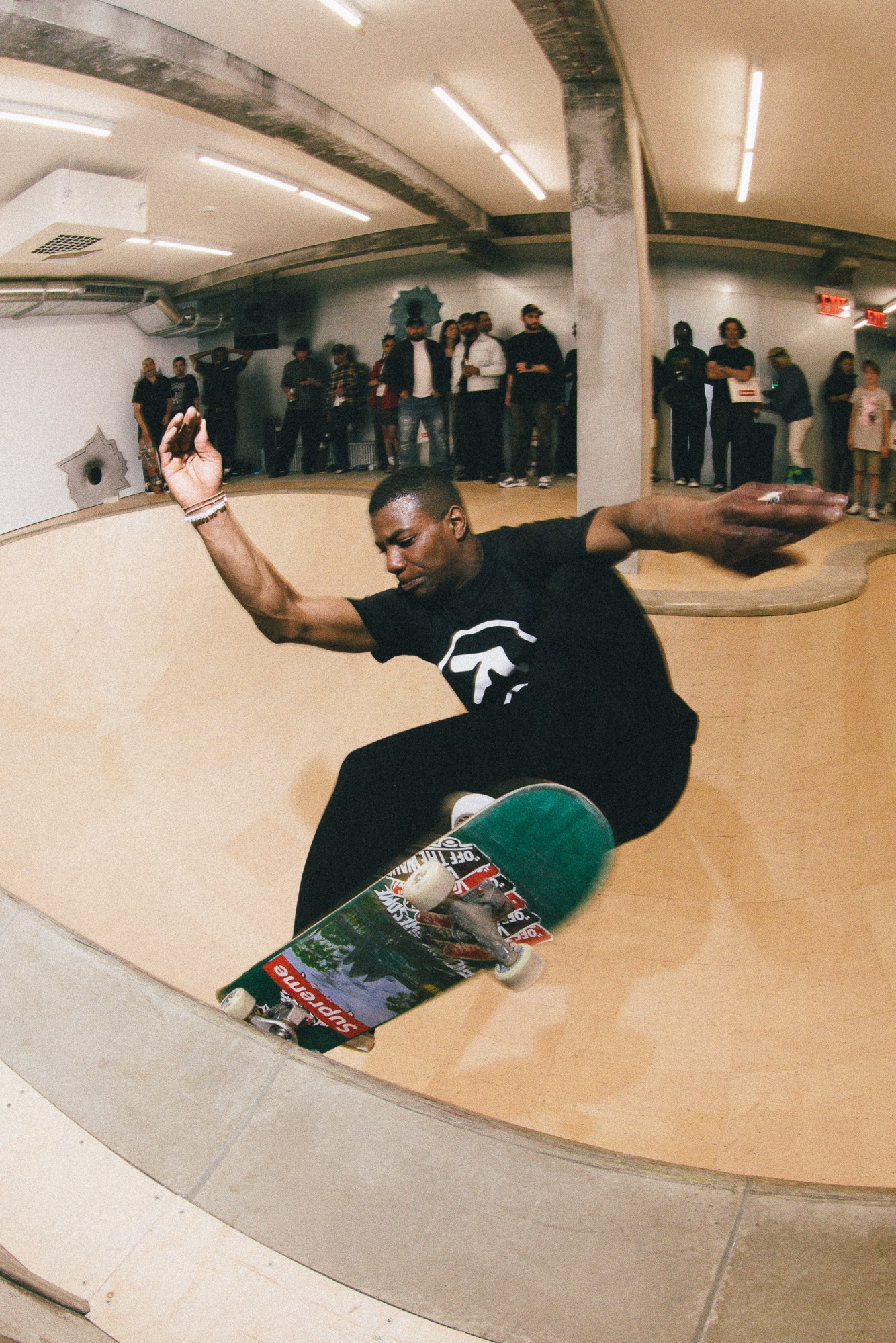“How much for your box logo tee?” A guy pulls up outside Club Space, rolls down the window of his gray Nissan, and asks me this. “Sorry, not for sale,” I shrug, and he speeds off into the Miami night.
That’s the kind of attention a Supreme shopping bag can get you in these parts. The skate brand, founded in New York in 1994 by James Jebbia, has transcended its wildest dreams. Valued at $1.5 billion during a 2024 sale to EssilorLuxxotica, previously sold for $2.1 billion in 2020 to VF Corp, it has not only become the most famous skate brand in the world, but one of the most famous brands in the world—period. Tourist shops from Rome to New Delhi knock off its box logo tee. The brand went viral in 2017 for an official Louis Vuitton collaboration and for an unofficial Supreme x LV coffin. The downside of total world domination is that a big tent also comes with clout chasers and posers. It can often feel like the Supreme fandom, which exists on at least six continents, has evolved past even really knowing what Supreme really is.
Think of it like this: Do you think the guy buried in the Supreme coffin knew about “Cherry?”
That’s the paradox to building a brand in a community—how do you grow without inviting in strangers? Supreme is both the coolest group of talented skaters, artists, photographers, stylists, and designers, and a behemoth brand known by every person with a smartphone. Most of Supreme’s fans and its haters cannot make peace with this disparity.
So I did what any reporter would do and went to the opening of the Supreme store in Miami to live three days inside the beating heart of the influential brand.
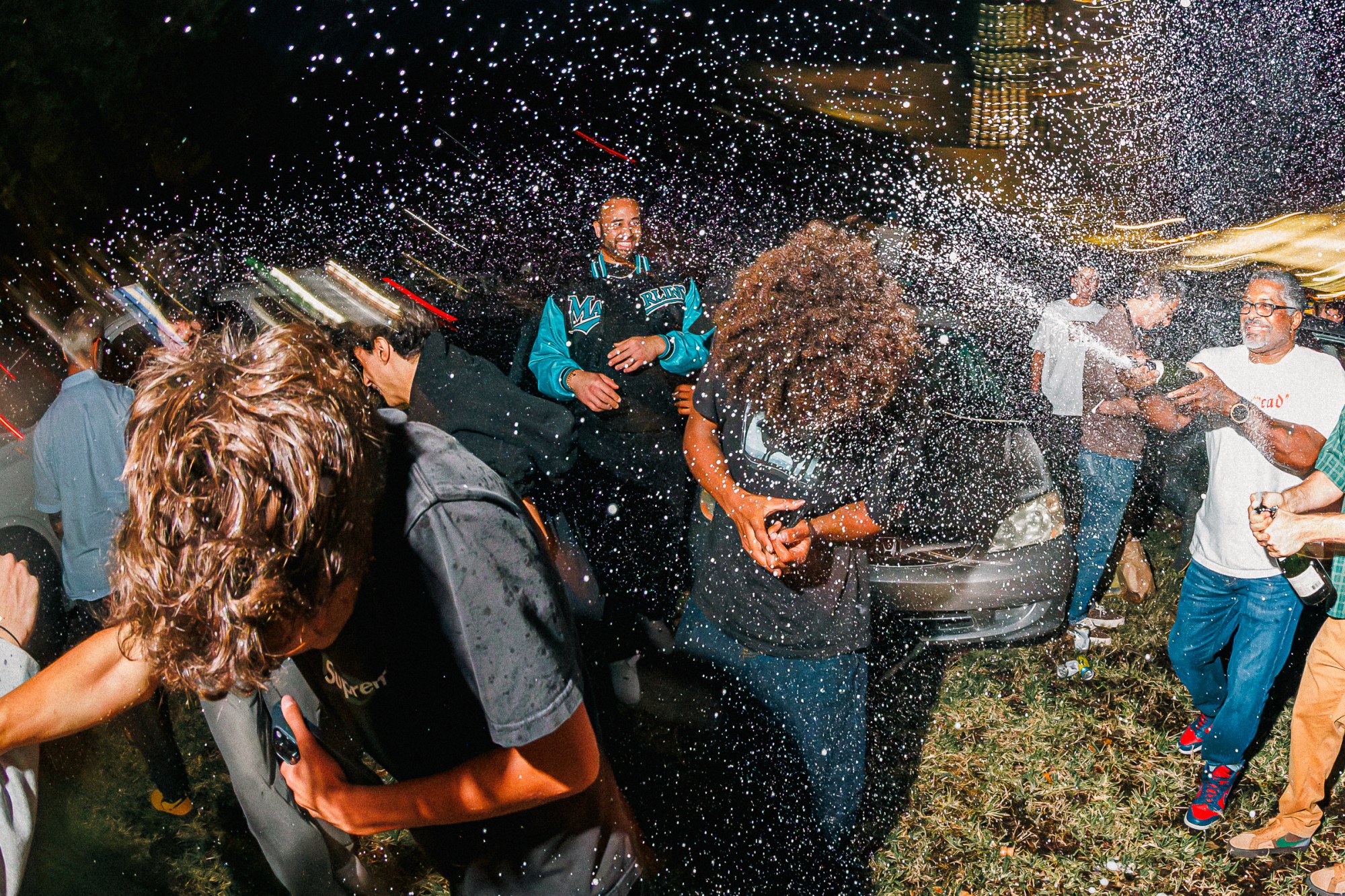
First, We Arrive At the Drive-In with William Strobeck and Zion Effs
The opening of a Supreme store in a new city is both rare and exclusive. Its Miami outpost at 45 NE 41st Street is its 18th store ever—the latest in a recent round of expansions that have included Brooklyn (2017), San Francisco (2019), Milan (2021), Berlin (2021), Chicago (2022), Seoul (2023), and Shanghai (2024).
The store will open on a Thursday. At 5 p.m. on a Monday I get a phone call asking if I can get on a plane at 1 p.m. on Tuesday to be in Miami by 6 p.m., when the festivities will kick off. The answer was yes.
At the drive-in on Tuesday night, people pile onto hoods and into trunks to watch Supreme’s new skate film. There are food trucks and picnic tables dotted with bags of kettle corn, and every 30 minutes someone swooshes over to ask if we need anything from the bodega, shuffling back onto the lot with a rack of Heinekens or Modelos. Towards the end of the humid, boardshorts night, someone shoves a Supreme-red BuzzBallz into my hand. (Flavor: Strawberry ’Rita.)
As the sun sets, everyone is instructed to put their car radios to 87.9 FM and roll the windows down. William Strobeck’s “Headbanger” dazzles over the drive-in’s projection screen. The film is a 31-minute ode to the Miami skate scene featuring 30 skaters, some locals like Beatrice Domond, Rezza Honarvar, and Elijah Odom, some skating stalwarts roll through like Mark Gonzales.
The video’s star is 16-year old Zion Effs. Freshly signed to the Supreme skate team, the Miami native is on the precipice of his moment. He’s already the biggest thing in skateboarding, having risen to fame at just 9-years old, when his father began posting videos of him skating on Instagram. But with a Supreme co-sign, Effs both joins a pantheon of skate legends and opens himself up to recognition beyond the world of skaters. The high school sophomore has a giant smile, an earnest fearlessness only innate in someone who started throwing himself down skate ramps at 3-years old, and a mini-me younger brother Jax (just 10).
The next day, I’m sitting with Effs and Strobeck in a back room of the as-yet-unopened Supreme store. “I wasn’t really looking up to anyone,” Effs says of his introduction to skateboarding via YouTube. “I would just watch one video and then some recommendations would pop up, so I would just watch that one.”
“He was watching the videos to go to bed when he was just a kid,” his dad Richie chimes in. “Mom used to have to put on the skate videos on the computer before he went to sleep and when he woke up, she’d open the computer and skate videos would still be playing.”
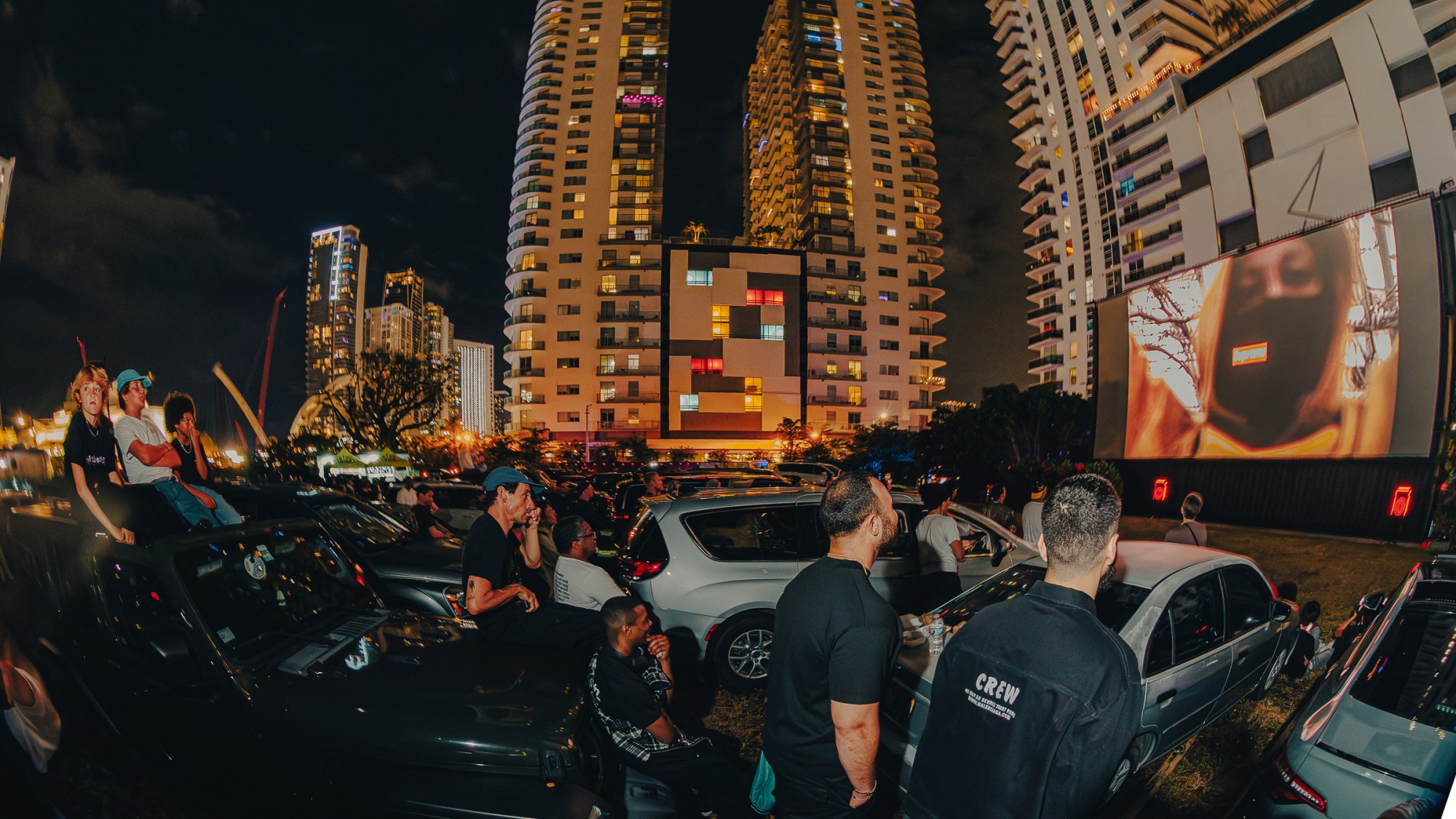
Learning about skateboarding means learning about Supreme. It’s a rite of passage that transcends generations. “I already knew what Supreme was growing up. In the ’90s Supreme had its own niche, low-key, little family,” says Strobeck, who grew up skating in Syracuse and later Philadelphia, before making his way to California and then New York City. “Supreme was already popular” when he first got involved with the brand in the 2010s, and he admits, “I just knew in my head the size something could be coming out of Supreme could be because Supreme is bigger outside of the skateboard world. You know, there’s Kate Moss involved with it.”
But back in that drive-in even the Kate Mosses of Supreme are just normal people. In the lot, there’s a famous costume designer, there’s a model that opens shows at Paris Fashion Week, there’s a Grammy-nominated musician. Everybody is somebody, but they’re just part of the gang. That’s what makes this whole scene so strangely welcoming—even the heroes are mortal. Maybe it’s just the way of skateboarders. When Zion was a child, his dad tells me, he walked into Grand Central, Miami’s flagship skate park of the 2000s, with just a board and a dream. The other skaters took him in and taught him how to do it—and they celebrate him tonight now that he’s doing it for real.
“With the videos that I do, I want to present everyone as these huge things,” Strobeck tells me. “I want kids to look at these guys like I did when I was looking at skate videos when I was a kid. I want them to be like, ‘Fucking shit!’”
“What was it like watching yourself at the drive-in?” I ask Effs.
“It was crazy. I couldn’t stop smiling,” he beams. “It felt insane to see me on that big screen. I feel so iconic.”
At night, he’s sitting with his little brother atop a sedan. Lauryn Hill’s “Ex Factor” plays. They had to get her permission to use it, and her rep messaged Strobeck a note from Hill herself: “It’s a beautiful piece and he’s incredible.” Zion and Jax’s two heads peek out in the crowd, backlit by the projection, their afros like halos in the Miami night.
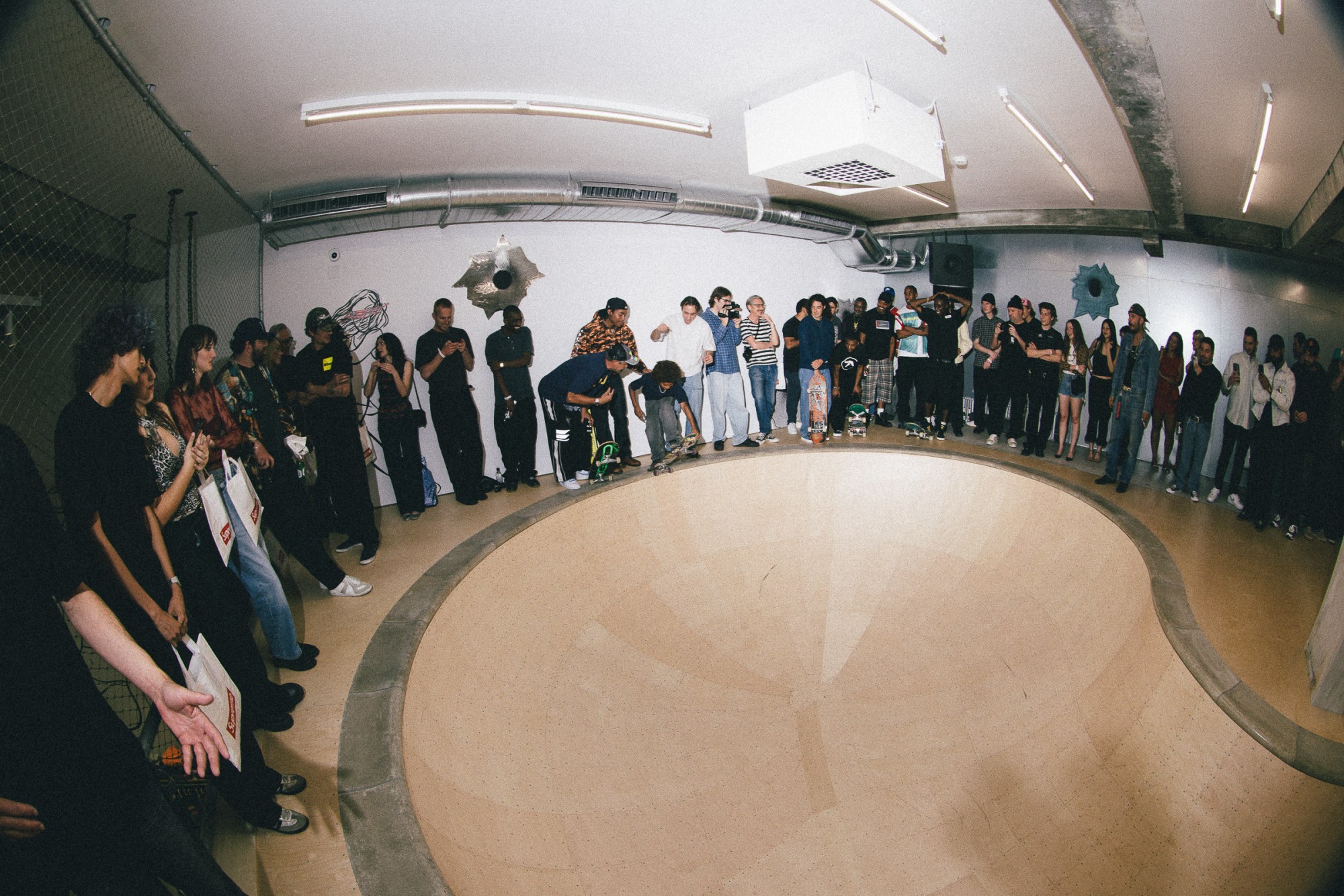
Next, Skating at the Supreme Store With Friends
Less than 24 hours later, the Effs brothers are thrashing through the brand-new bowl in the Supreme store. The bowl itself, a mandatory inclusion in a Supreme store, is a feat of physics, fully cantilevered on the second floor, so you can stand underneath it and drown in the whir of wheels on plywood. Tino Razo is upstairs, explaining to me how a load-bearing pillar presented a small issue in the bowl’s design, resulting in an extra-curvy bean shape, but Simparch, the design collective and engineers contracted by Supreme to design the bowls in their stores in 2003, found a way to make it work.
Jax is bobbing up and down in the bowl, whizzing around that sharp curve. A guy in Supreme x LV overalls is taking pictures. A girl hands Jax $100 in 20 dollar bills and he mugs for the cameras with it beside his brother.
It’s absolutely packed inside this store. The Supreme crew is here from Japan and Los Angeles and New York, including Erin Magee, its VP of design and founder of MadeMe, and other now-legendary Supreme skaters like Sean Pablo. I’m surprised to see Bam Margera here. I’m surprised to run into friends from New York who just 12 hours ago were dancing in Milan with Bjork at Salone Del Mobile. That’s the draw—if you are invited inside the Supreme sanctum, you can’t say no. There is a head of security to make sure that inside are friends and outside is everybody else.
A Supreme store is the only place to really macrodose the Supreme ideology. Supreme is only sold IRL at Supreme stores and at Dover Street Markets, and its only events are store opening parties and an occasional shindig in New York City. The inner sanctum is small—but it has to be to keep the convivial vibe so integral to its identity. The stores, with routine Thursday drops of new product, become the only accessible touchpoint between Supreme’s heart and its hands. If you want to know what’s up with Supreme in three dimensions, you have to make a pilgrimage to a store.
“When people come to our stores they get to experience Supreme in its purest form,” Todd Jordan, Supreme’s brand director, tells me over the phone a couple days after the Miami opening. “The IRL experience is the experience.”
“It’s the artwork, it’s the store staff, it’s the feeling, it’s the music, it’s the sound of people skating a bowl,” he continues, “it takes a lot of time and a lot of work to get all the pieces in place.”
In this store are local skater sales staff who come up to say hey to me after they recognize me from hanging out at Miami’s other skate shop Andrew. (Founded in 2017 by Nick Katz, Pres Rodriguez, and Adrian Douzmanian, Andrew welcomes Supreme to its shores. What’s good for the goofy-footer is good for the gander.)
“Miami’s an important city, and it kind of just checks all the boxes,” Jordan says of the decision to expand into Florida. “Miami has great people, Miami has young creative kids, and kids with style, Miami has a point of view,” he goes on explaining that the skate scene has become more local and fervent—no longer just snowbirds escaping winter but a real homegrown group of skaters who have made Miami a must-stop on any skate trip, many thanks to the world Katz and his comrades have done to open Lot 11 in 2019. “It also kind of helps us connect the dot of the Southeast,” says Jordan, meaning that with the major quadrants of the United States covered by Supreme stores “it will very likely be the last door we open up in the U.S. at least for a very long time.”
In this door are artworks by Rita Ackermann, Harmony Korine, and Nate Lowman, scattering the walls of the store and its fitting rooms. There’s the most recent collection—hot item: the paisley jeans, sold out online by 10:03 a.m. the Thursday of the opening—and the white Snow Camo city-specific box logo tee, currently running at $450 on Grailed. But there’s also just a good energy. My personal fashion hero Omahytra Mota tells me she likes my outfit. I meet a dog named Margarita wearing a Juicy tracksuit. I count over a dozen film cameras—Leicas, Contaxes, tiny point-and-shoots acquired on eBay—but almost no one is flicking up the place with a cellphone. As I take out my phone to document the night my friend shrugs, “I should be taking more pictures to post, but I’m just busy having fun.”
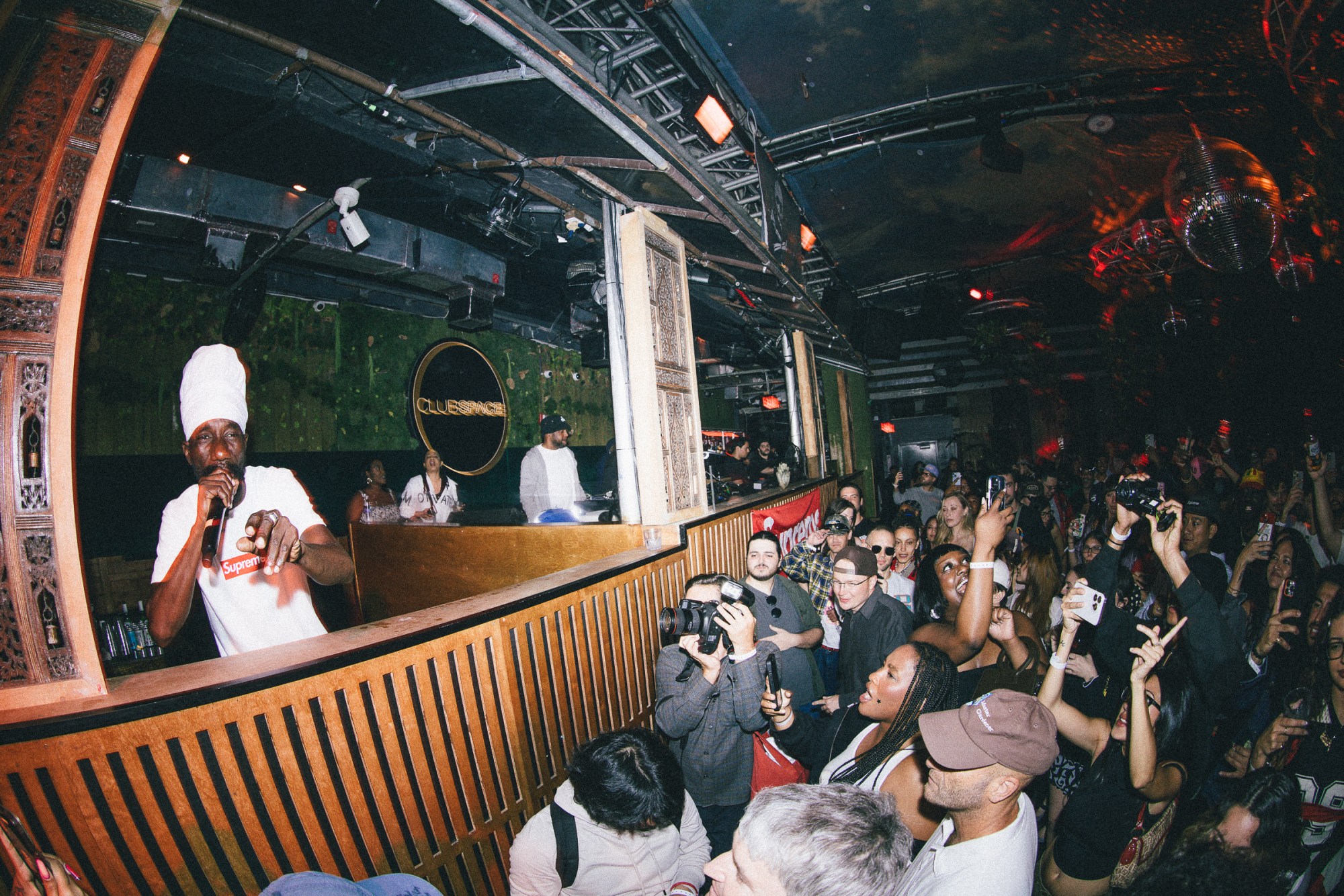
And Finally, A Party
Inside Club Space, a neon flecked master club that can hold 10,000 people, the DJ is playing Missy Elliott. Some girls in hot shorts are grinding. A friend from New York is lurching over the bar to get vodka sodas, “very different vibe from the New York parties!” she shouts over her shoulder. It’s gonna get hot in there I can tell, but I can’t stay all night.
At the center of the dance floor, my new friend the artist Marika Thunder and I are trading plans for this weekend. Nate Lowman, who contributed bullet hole artworks for the store and is a friend of Thunder’s, comes up and tells us that the club’s roof opens up and friends are recommending we stay til sunrise. “If I stay til sunrise I’ll definitely miss my flight home,” he laughs. (At least one person I know moves to a later flight the next morning.)
A director from London is here chilling after shooting a couple of ad spots. She’s been tailing celebrities, and is particularly happy to let her guard down and just party tonight. “You think Supreme will have, like, a teenager slamming the bedroom door in your face energy,” she tells me, “but everyone is just super nice.”
By this point I am no longer surprised that the sort of feral, viral, bro’ed out, Grailed re-seller energy you might think this brand is all about is nowhere to be found. Actually no one that I meet over three days even seems to care about their phones, their social media, the Internet in general or at all.
“Not to be too short, but we don’t think about that,” Jordan tells me about balancing the brand heritage, its legacy, and its public perception online.
“The design team is focused on making great product, which they do time and time again. Me and my team are focused on making great skate content and having the right people involved, which we will always continue to do. Everyone kind of keeps their head down and doesn’t really let the outside noise reshape any of their ways of thinking. Everyone does their best to keep it real,” Jordan continues.
“I don’t think Supreme is really doing anything differently today than they did in 1994,” he concludes, “Just make good product, have stores with the right people working them, have good skateboarders and make cool content, and let it do its thing.”
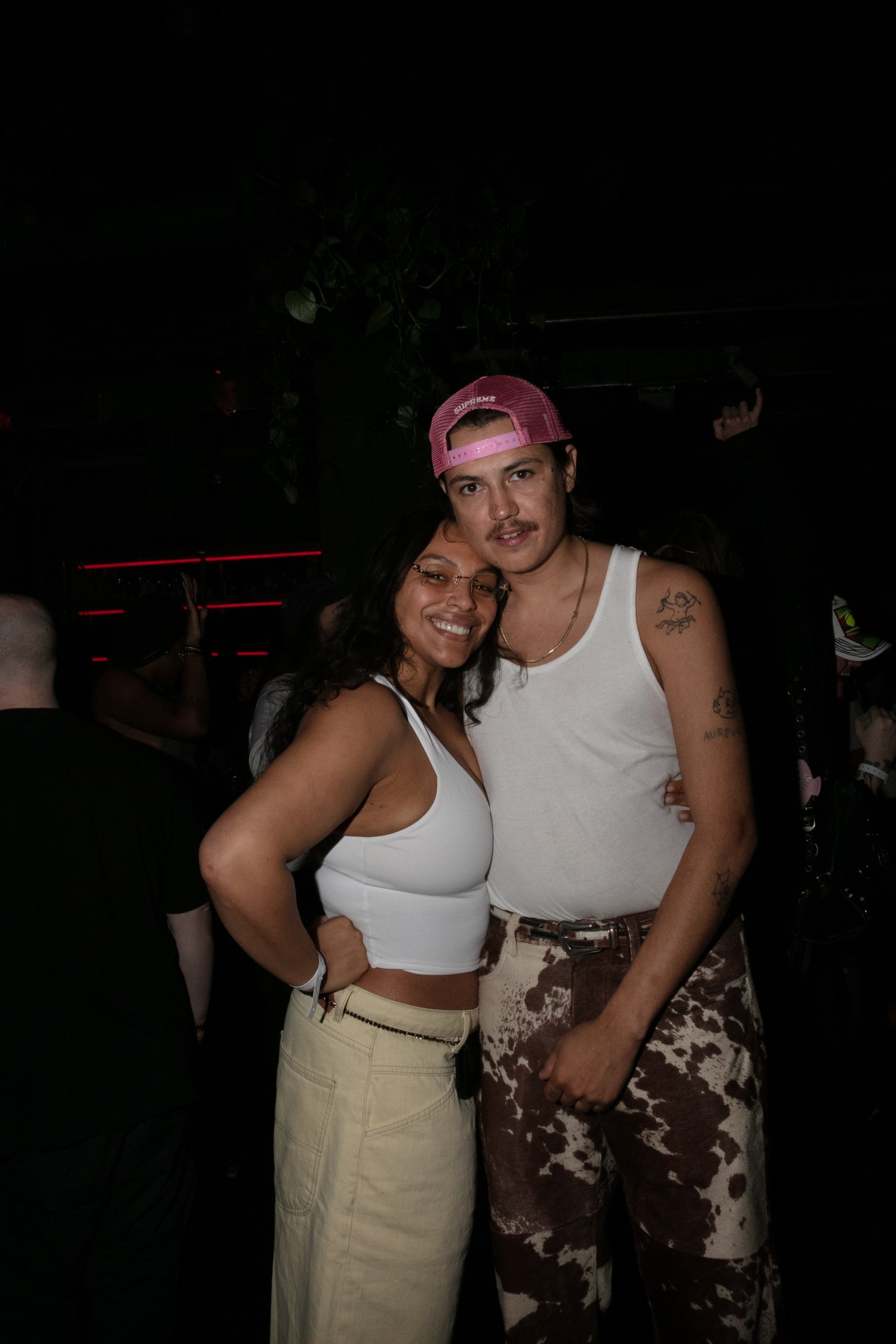

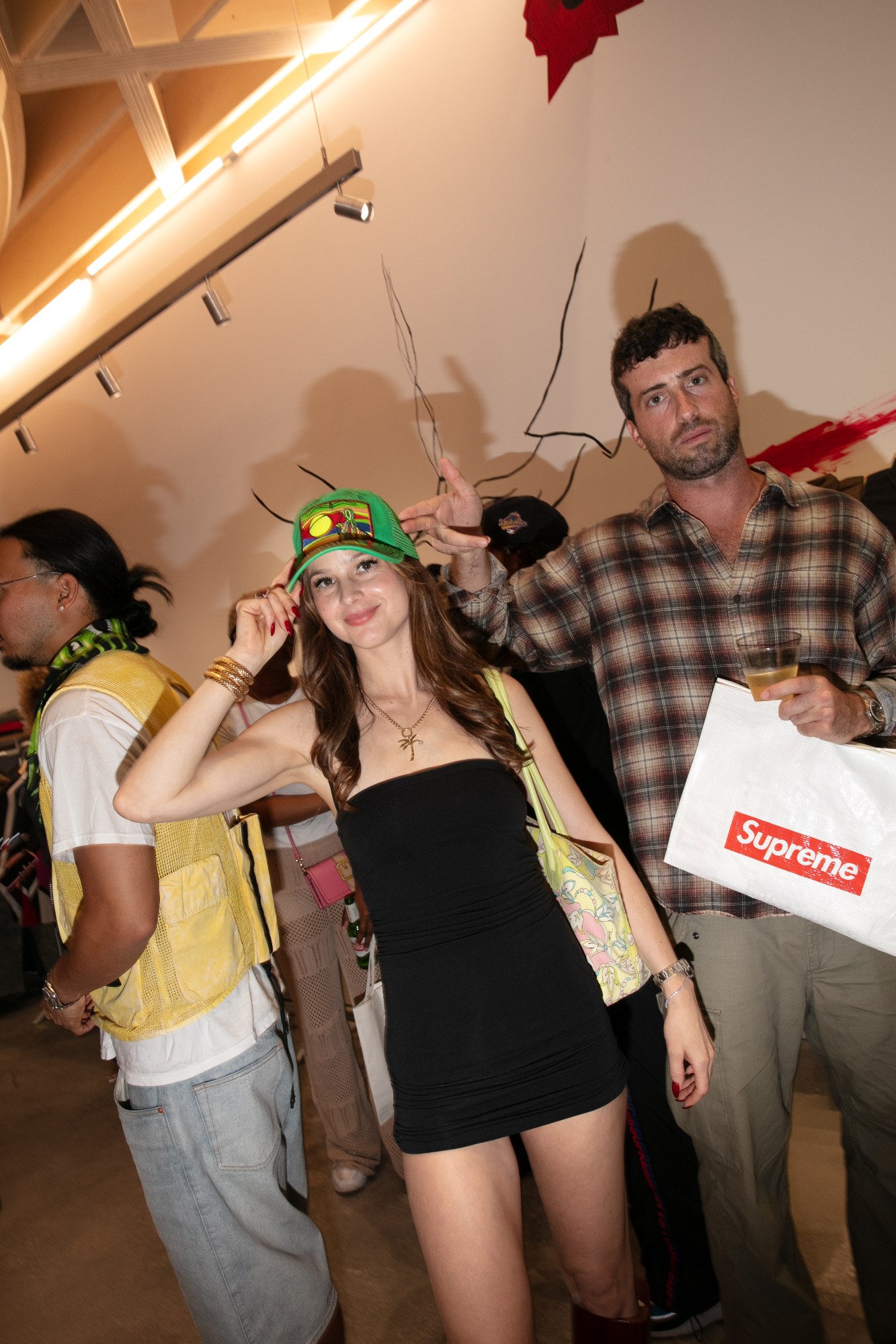
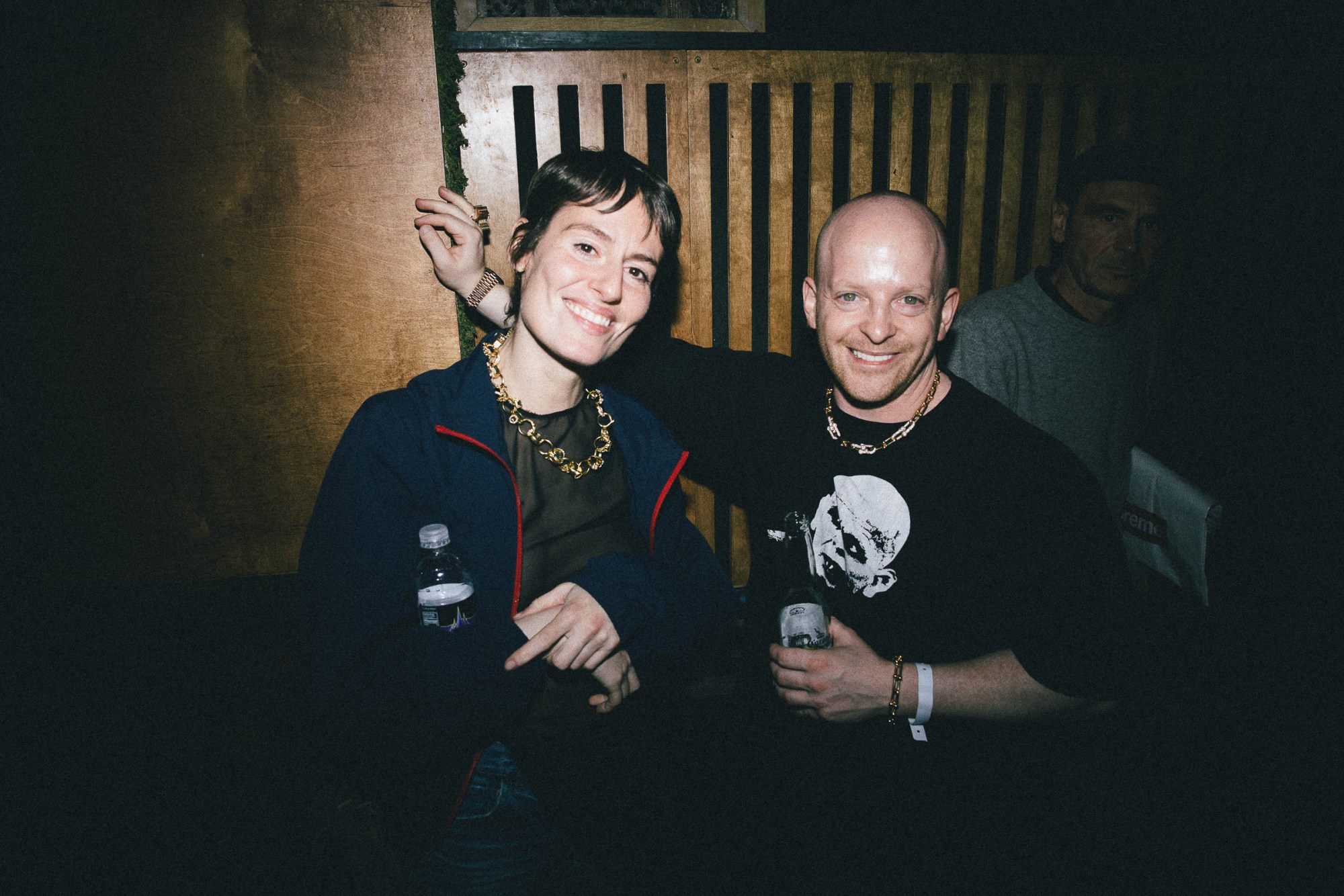
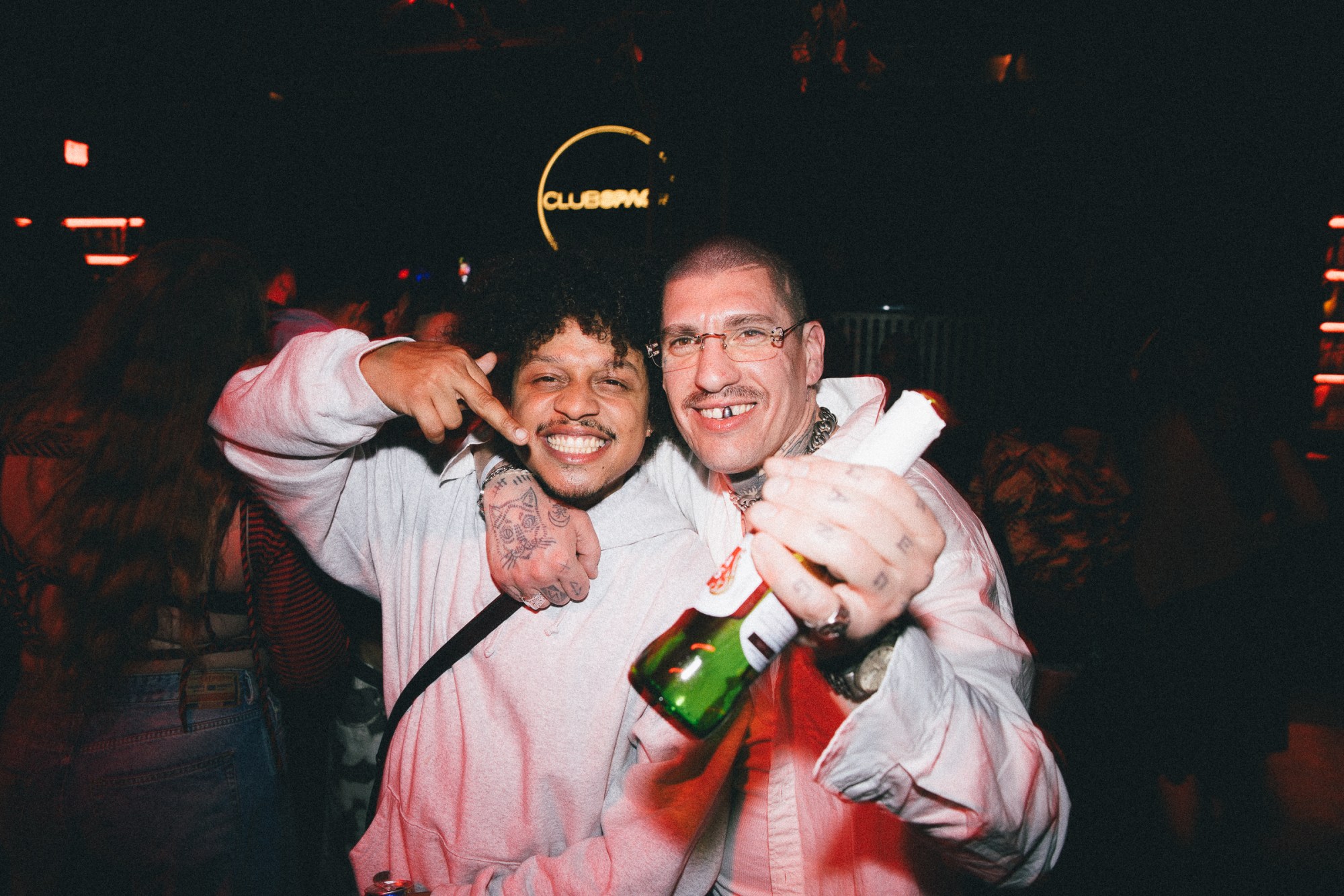







I leave the party by midnight so I can get up by 6 a.m. to swim, write, and drive by the store on the way to the airport. I make it to the store the minute it opens. Thousands of people have reserved a spot to shop. The queue is orderly, thanks to the reservations system, and the small but passionate crowd that has assembled to wait for their turn are mostly in head-to-toe Supreme. At least two guys are live-streaming. Other groups are comparing what’s sold out online to what they can see through the windows as still available.
The day before, I asked Nick Katz, the co-founder of the skate brand Andrew, founder of Miami’s flagship Lot 11 skate park, and effectively the mayor of skateboarding in Miami, if skaters can still sniff out a poser and still think it’s wack if someone talks the talk without walking the walk. “It’s still like that,” he laughs.
One of life’s truisms: You can’t just put that shit on.
“You get a lot of young people who will come and line up and sleep out overnight to buy something, and then they put it on eBay,” James Jebbia told Glenn O’Brien in 2009. “If they’re hustling to make a hundred bucks, fine. I have no problem with it. I used to think more of it. But now I just think it’s no different than somebody going and checking out a blog or something. To be honest, I’d worry if that didn’t happen, because then it’d mean that people don’t like our product.”
I feel a bit for the people who aren’t having a good time inside the drive-in, inside the club, inside the store, inside the skate park, the people who are driving by in their Nissan trying to make a deal. But I don’t make the rules. That’s the free market of fashion, the eternal line Supreme must toe between serving skaters and serving SKUs. To be a business, some people have to put that shit on—you just can’t dwell on it.
